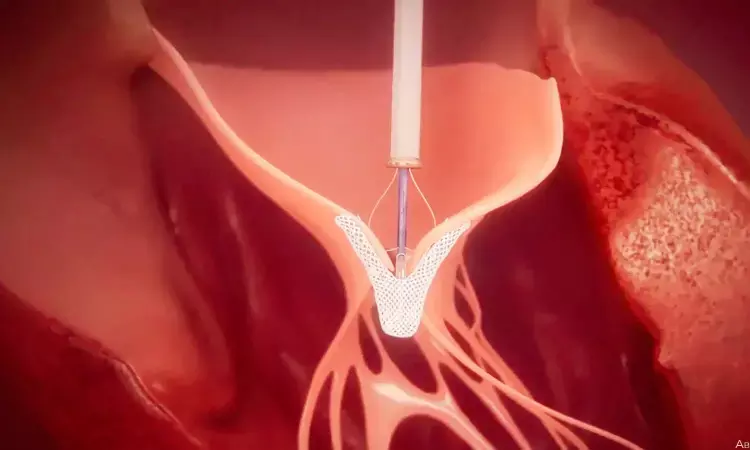- Home
- Medical news & Guidelines
- Anesthesiology
- Cardiology and CTVS
- Critical Care
- Dentistry
- Dermatology
- Diabetes and Endocrinology
- ENT
- Gastroenterology
- Medicine
- Nephrology
- Neurology
- Obstretics-Gynaecology
- Oncology
- Ophthalmology
- Orthopaedics
- Pediatrics-Neonatology
- Psychiatry
- Pulmonology
- Radiology
- Surgery
- Urology
- Laboratory Medicine
- Diet
- Nursing
- Paramedical
- Physiotherapy
- Health news
- Fact Check
- Bone Health Fact Check
- Brain Health Fact Check
- Cancer Related Fact Check
- Child Care Fact Check
- Dental and oral health fact check
- Diabetes and metabolic health fact check
- Diet and Nutrition Fact Check
- Eye and ENT Care Fact Check
- Fitness fact check
- Gut health fact check
- Heart health fact check
- Kidney health fact check
- Medical education fact check
- Men's health fact check
- Respiratory fact check
- Skin and hair care fact check
- Vaccine and Immunization fact check
- Women's health fact check
- AYUSH
- State News
- Andaman and Nicobar Islands
- Andhra Pradesh
- Arunachal Pradesh
- Assam
- Bihar
- Chandigarh
- Chattisgarh
- Dadra and Nagar Haveli
- Daman and Diu
- Delhi
- Goa
- Gujarat
- Haryana
- Himachal Pradesh
- Jammu & Kashmir
- Jharkhand
- Karnataka
- Kerala
- Ladakh
- Lakshadweep
- Madhya Pradesh
- Maharashtra
- Manipur
- Meghalaya
- Mizoram
- Nagaland
- Odisha
- Puducherry
- Punjab
- Rajasthan
- Sikkim
- Tamil Nadu
- Telangana
- Tripura
- Uttar Pradesh
- Uttrakhand
- West Bengal
- Medical Education
- Industry
Hospitals with high mitral surgical volumes yield best M-TEER outcomes at one year: Circulation

USA: New data suggests that transcatheter Edge-to-Edge Repair (TEER) of the mitral valve for mitral regurgitation, can be safely performed in centers with low mitral valve (MV) repair volumes. However, 1-year mortality and heart failure readmission are superior at centers with higher surgical MV repair (MVr) volume.
"While there was no difference in the risk of death in the hospital or at 30 days with transcatheter edge-to-edge repair for primary mitral regurgitation when done at low-, intermediate-, and high-volume surgical centers, that equivalence didn’t hold up at one year," the researchers reported.
The findings were published online in Circulation: Cardiovascular Interventions on March 4, 2024.
Transcatheter edge-to-edge mitral valve repair is an effective treatment for patients with primary mitral regurgitation at prohibitive risk for surgical MV repair. High-volume TEER centers and high-volume MVr centers have better outcomes than low-volume centers. However, it is unknown whether MVr volume predicts TEER outcomes.
Against the above background, Paul A. Grayburn, Baylor Scott, and White Heart Hospital Plano, TX, and colleagues hypothesized that high-volume MV surgical centers would have superior risk-adjusted outcomes for TEER than low-volume centers.
To test the hypothesis, the researchers combined data from the Society of Thoracic Surgeons adult cardiac surgery database and the American College of Cardiology/Society of Thoracic Surgeons Transcatheter Valve Therapy registry.
Surgical MV repair was defined as leaflet resection or artificial chords with or without annuloplasty and was evaluated as a continuous variable and as predefined categories (<25, 25-49, and ≥50 MV repairs/year). A generalized linear mixed model assessed risk-adjusted in-hospital/30-day mortality, TEER success (mitral regurgitation ≤2+ and gradient <5 mm Hg), and 30-day heart failure readmission.
The study revealed the following findings:
- The study included 41,834 patients from 500 sites of which 66.4% were low, 20.4% intermediate, and 13.2% high-volume surgical centers.
- TEER success was 54.6% and was not statistically significantly different across MV surgical site volumes.
- TEER mortality at 30 days was 3.5%, with no significant difference across MVr volume on unadjusted or adjusted analysis of volume as a continuous variable.
- One-year mortality was 15.0% and was lower for higher MVr volume centers when adjusted for clinical and demographic variables.
- Heart failure readmission at one year was 9.4% and statistically significantly lower in high-volume centers on both unadjusted and adjusted analysis.
In conclusion, TEER can be performed safely in centers with low volumes of MV repair. However, hospitals with more surgical experience see better M-TEER outcomes in 1 year.
Reference:
Grayburn PA, Mack MJ, Manandhar P, Kosinski AS, Sannino A, Smith RL 2nd, Szerlip M, Vemulapalli S. Comparison of Transcatheter Edge-to-Edge Mitral Valve Repair for Primary Mitral Regurgitation Outcomes to Hospital Volumes of Surgical Mitral Valve Repair. Circ Cardiovasc Interv. 2024 Mar 4:e013581. doi: 10.1161/CIRCINTERVENTIONS.123.013581. Epub ahead of print. PMID: 38436084.
Dr Kamal Kant Kohli-MBBS, DTCD- a chest specialist with more than 30 years of practice and a flair for writing clinical articles, Dr Kamal Kant Kohli joined Medical Dialogues as a Chief Editor of Medical News. Besides writing articles, as an editor, he proofreads and verifies all the medical content published on Medical Dialogues including those coming from journals, studies,medical conferences,guidelines etc. Email: drkohli@medicaldialogues.in. Contact no. 011-43720751


